How to Choose the Right Scaffolding for Your Home Exterior Project
In home exterior work, safety always comes first. You may be painting the top of your property, replacing your roof, or undertaking other exterior maintenance. Whatever it is, scaffolding gives you a safe working platform to access it with ease and convenience. But how do you select the appropriate scaffolding for your home exterior work? In this post, we will guide you through how to select the right scaffolding based on your project needs, such as height, weight capacity, and terrain.
We also recommend that you read our recent blog post for more information on the 5 most common home improvement projects that require scaffolding.
Assess the Scope of Your Home Exterior Project
It is important to first asses the task at hand to understand what scaffolding is going to be right for your home exterior project. Are you carrying out small maintenance repair or is it a large overhaul of the property exterior or roof? It is important to asses the type of materials that will need to be accessed, the frequency of how often users will climb the scaffolding and also the positioning requirements of the scaffolding.
For small tasks like gutter cleaning or painting, a less complex scaffold setup may suffice and allow for quick easy access. For larger tasks like roofing or window replacement, a more robust scaffolding system will be needed to support both the workers and the materials securely.
Key Questions to Ask Yourself:
How high is the working platform? (Height will determine how tall the scaffold needs to be)
How heavy are the materials? (Roofing materials or heavy tools need scaffolding with increased weight capacity)
What type of work are you going to be doing? (Roofing, painting, or repairs require various setups)
Determine the Best Type of Scaffolding for Your Needs
Once you have considered the size of the project, it is time to determine what type of scaffolding will best meet your needs. These are the most common types to use on small home exterior projects:
Trestle Scaffolding
Trestle scaffolding is most effective for little, low level exterior work. It’s easy to put together and provides a sturdy base for painting, window cleaning, or making minor repairs. Trestle scaffolding typically only reaches around a maximum of 5 meters, so its only suited to particularly low level work.
Best for:
Small exterior projects involving low level work
Pros:
Easy to setup and lower cost
Lightweight and easily transported
Great for temporary use
Cons:
Limited vertical capability
Single Scaffolding
Single scaffolding is a traditional and widely used type of scaffolding for exterior use. It is a chain of vertical and horizontal tubes coupled by cross braces. It’s best suited for small and medium sized outside tasks, such as painting or repairing the lower half of your home exterior. In some cases, this type of scaffolding also be used for task such as window replacement and fitting.
Best for:
Smaller house repairs, window replacement or exterior painting for up to 2 stories
Strengths:
Strong and reliable
Flexible to accommodate many types of work
Has very good access to gutters and windows
Disadvantages:
Requires a little more space around the building to be erected
Double Scaffolding
Double scaffolding is stronger and is best used for bigger or more complex jobs, e.g., roofing or high-rise window replacement. With two towers of scaffolding, it has greater support and stability making it a much more stable and solid foundation for heavy materials and frequent usage.
Best for:
High roof repairs / replacement, extensive renovations, or larger exterior projects
Pros:
Strong and stable
High weight capacity for heavy materials
Ideal for tall buildings
Cons:
Requires more space
More time-consuming to set up
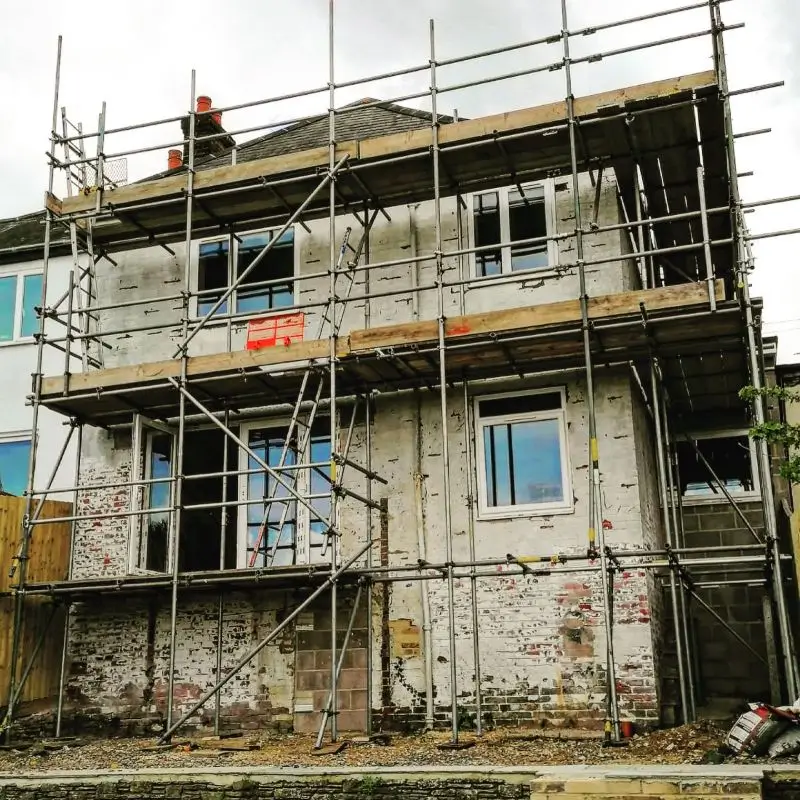
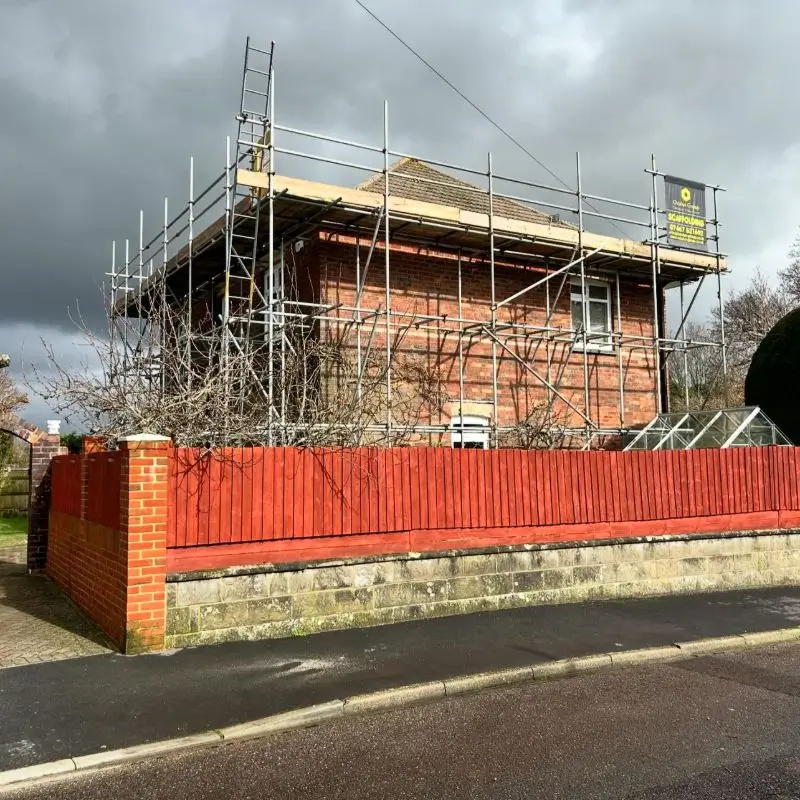
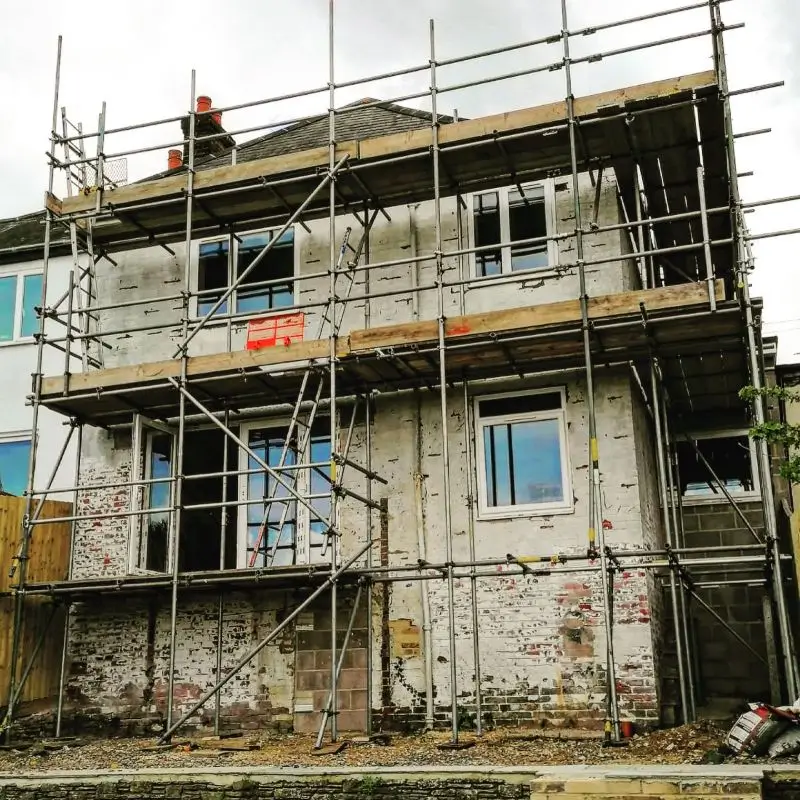
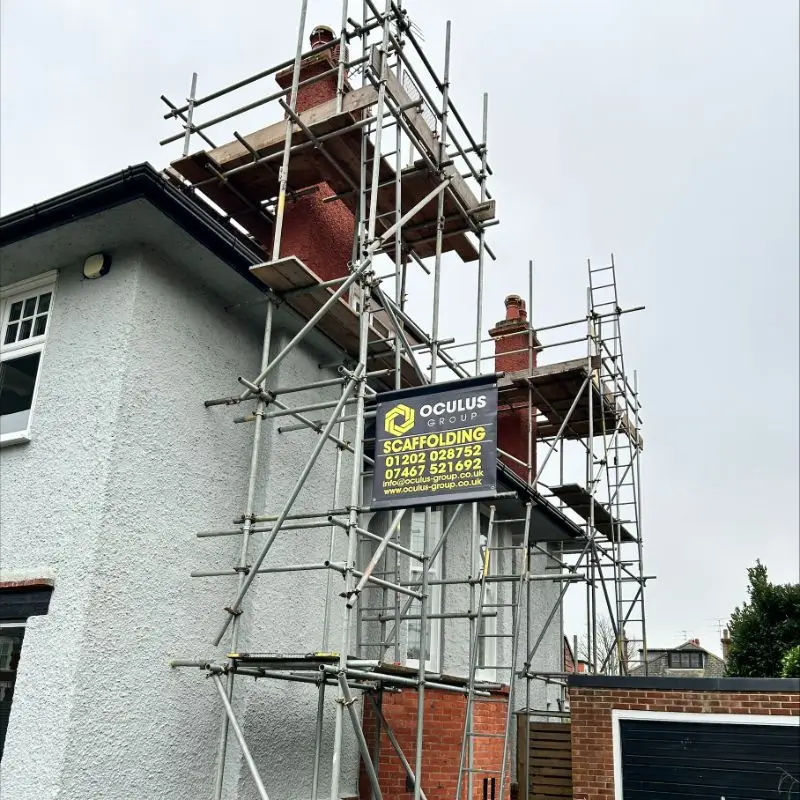


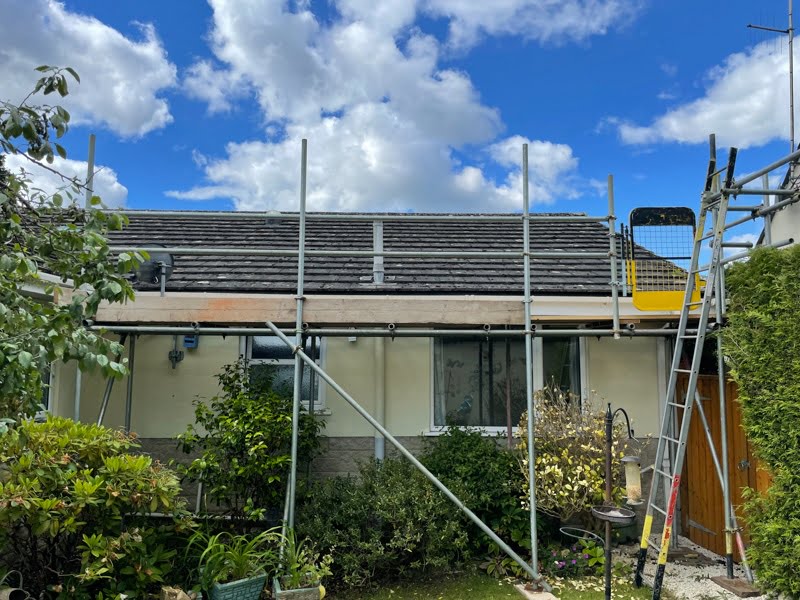
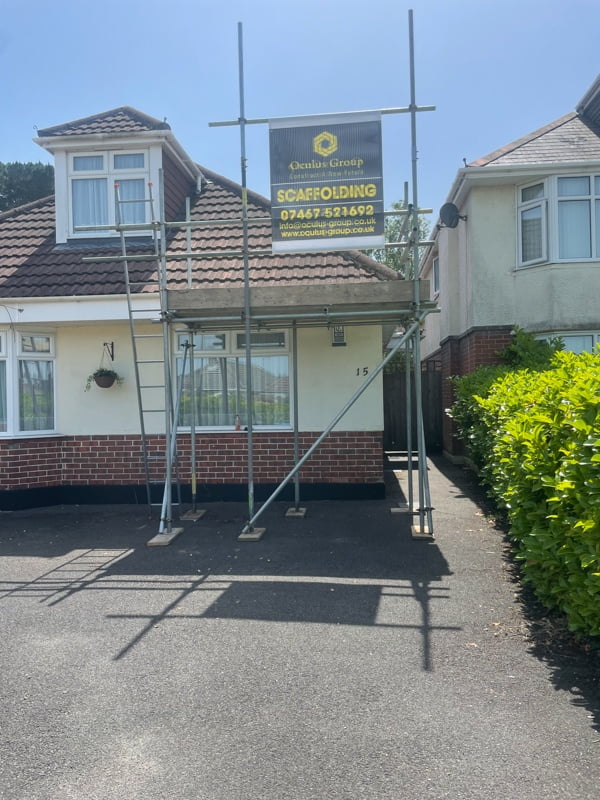
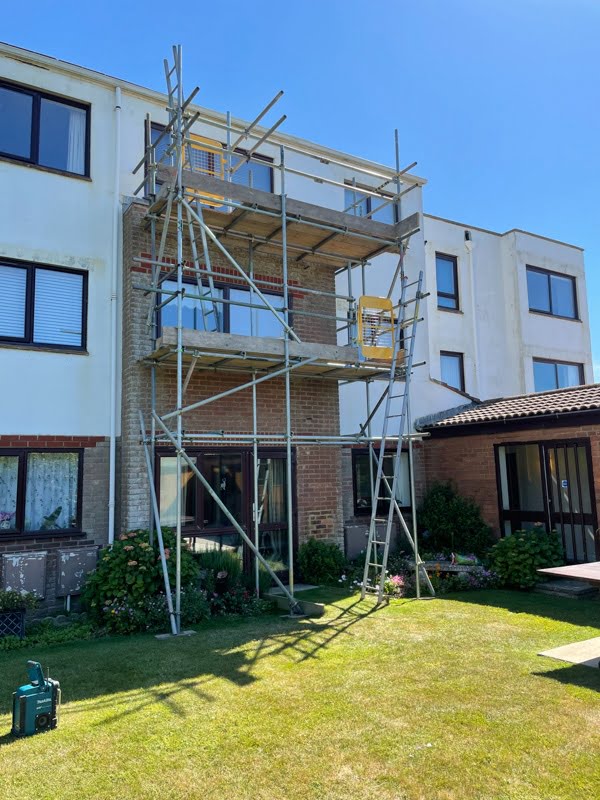
To find out more about the various types of scaffolding, read our recent blog post: Types of Scaffolding: Which One Is Right for Your Project?
Consider Weight Capacity and Stability
When choosing scaffolding for work on the exterior of a house, you need to consider terrain and weight capacity. Scaffolds have different weight capacities, which are separated into necessary safety factors. For roof work, where heavier materials like tiles are involved, you will need scaffolding with greater strength in weight capacity.
Weight Capacity Tips:
Light duty scaffolding: Ideal for light tasks such as painting or cleaning windows.
Heavy duty scaffolding: Required for roofing or projects involving heavy materials.
Check manufacturer guidelines: Always verify the scaffolding’s weight capacity to ensure it meets the needs of your project. A professional scaffolding company will be able to advise you on this.
It is also necessary to think about the ground the scaffolding will be setup on. The base of the scaffolding is most important to the overall structure and setup on uneven, boggy or sloped ground can be difficult. Specialist equipment might be required if you notice any of these to support stability and safety.
Ensure Easy Access to the Work Area
Consider how scaffolding will be reached and how easily materials can be transferred by labourers. For example, ladders and access platforms may be required in order to safely reach higher sections. Depending on the scope of your home exterior project, you may also need scaffolding with built-in ladders or a safe climbing system.
Pro Tip: For work on more than one story, a system based on ladders or a stairway scaffold is required for safety and ease of use.
Consult a Professional Scaffold Company
Although you might be able to make an educated assumption on which scaffolding is best for your exterior home improvement project, it is always recommended to consult a professional scaffolding company to asses the requirements. A professional scaffolding company has experience of choosing the right scaffolding for home exterior projects day in and day out. They will ensure the scaffolding is structurally safe and minimise the risk of injury or damage to property.
At Oculus Group, we offer a variety of scaffolding solutions to fit home exterior projects. From roofing, painting, to repairs, our experts can help you choose the right type of scaffolding based on your project requirements. We offer a free, no obligation site survey and quote.
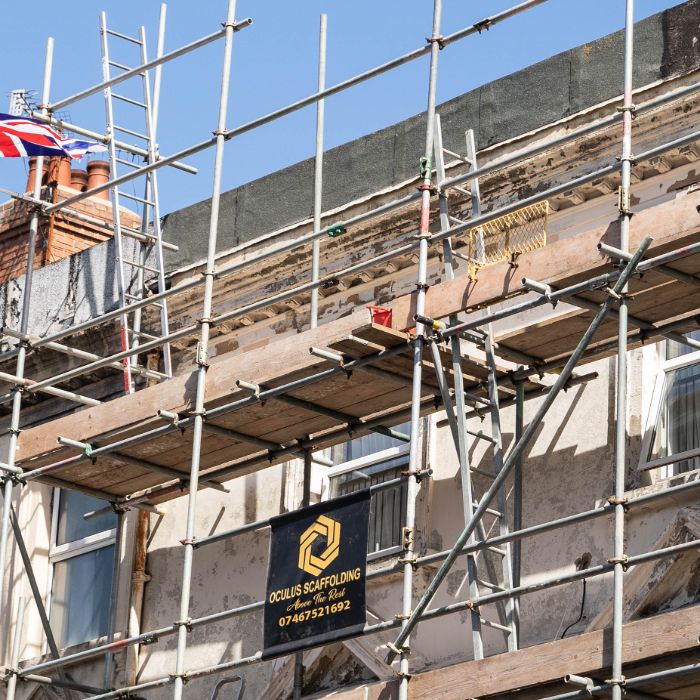
Conclusion
Choosing the right scaffolding for your home exterior project is vital to safety and efficiency. Being aware of how much work you are going to do, picking the right type of scaffolding, and considering weight capacity and accessibility needs, will simplify your project. If you are not sure about what type of scaffolding to choose for home repairs or roofing, you can contact a professional scaffolding company for guidance.
Oculus Group, provide scaffolding to both domestic and commercial settings. Our team are friendly and available to guide and support you through your scaffolding needs. Contact us today for advice and guidance.

